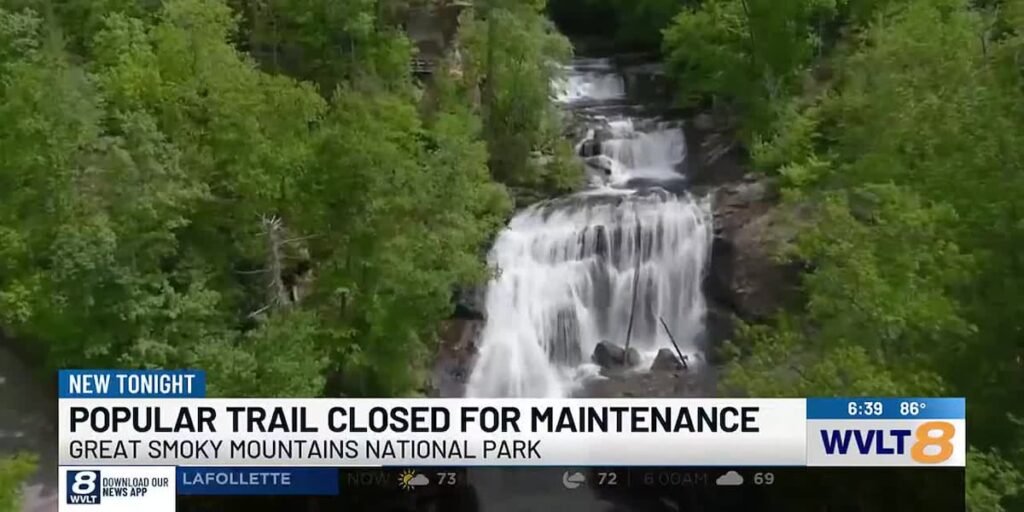Beyond the Beaten Path: Exploring Hidden Gem Hikes in the Great Smoky Mountains
There’s something magical about standing on a trail in the Smoky Mountains, breathing in that misty mountain air as sunlight filters through ancient trees. After 15 years of exploring these mountains, I still discover new trails that take my breath away – and not just from the elevation gain!
While iconic routes like Alum Cave and Chimney Tops draw the crowds (and rightfully so), some of the most memorable experiences come from venturing onto less-traveled paths. Today, I’m sharing some alternative hikes that offer similarly stunning experiences to the park’s most popular trails, but with a fraction of the foot traffic.
Alternatives to Popular Smoky Mountain Trails
If you’ve hiked the park’s greatest hits, or simply want to escape the crowds, consider these wonderful alternatives that deliver similar scenery and experiences:
Instead of Laurel Falls, Try: Spruce Flats Falls
While Laurel Falls sees thousands of visitors daily during peak season, Spruce Flats Falls remains relatively unknown. This 2-mile round trip starts behind the Tremont Institute and leads to a stunning multi-tiered waterfall that’s perfect for photography. The trail offers the same family-friendly waterfall experience but with more solitude and a slightly more adventurous feel.
Pro tip: Visit after a rainstorm when the falls are at their most dramatic!
Instead of Clingmans Dome, Try: Andrews Bald
Everyone wants to stand on the highest point in the Smokies, making Clingmans Dome perpetually busy. For similar sweeping views but with more wildflowers and fewer people, hike to Andrews Bald. Starting from the same parking area, this 3.5-mile round trip takes you through spruce-fir forest to a grassy mountain meadow with panoramic vistas. I’ve spent entire afternoons here without seeing more than a handful of other hikers.
Hidden Treasures for Experienced Hikers
If you’re up for more challenging adventures, these trails deliver big rewards:
Ramsey Cascades: The Park’s Tallest Accessible Waterfall
This 8-mile round trip hike gains 2,200 feet of elevation as it follows rushing streams through old-growth forest to reach the park’s tallest waterfall at 100 feet. The trail passes through some of the largest trees in the park – including tulip trees over 20 feet in circumference. It’s strenuous but worth every step.
Gregory Bald: Flame Azalea Paradise
If you visit in mid-June, this challenging 11-mile round trip hike rewards you with one of the most spectacular natural gardens in North America. The summit’s grassy bald erupts with flame azaleas in a rainbow of colors from deep red to bright orange and pale yellow. I’ve literally gasped out loud when reaching the top during peak bloom.
| Trail Name | Distance (round trip) | Difficulty | Best Feature |
|---|---|---|---|
| Spruce Flats Falls | 2 miles | Moderate | Multi-tiered waterfall |
| Andrews Bald | 3.5 miles | Moderate | Mountain meadow views |
| Ramsey Cascades | 8 miles | Strenuous | Tallest waterfall in park |
| Gregory Bald | 11 miles | Strenuous | Flame azaleas (June) |
Family-Friendly Alternatives
Hiking with kids? These trails offer big experiences with shorter distances:
Kephart Prong Trail
This 4-mile round trip follows a beautiful stream with multiple crossings on log bridges (kids love these!) and passes historic CCC camp ruins. With minimal elevation gain and lots to see along the way, it’s perfect for families wanting to experience the park’s history and natural beauty.
Little River Trail
Starting in the Elkmont historic district, this flat, wide trail follows the scenic Little River. Go as far as you like and turn around when little legs get tired. Spring brings wildflowers, while fall delivers spectacular colors reflected in the crystal-clear water.
Safety Tips for Lesser-Known Trails
When venturing onto less-traveled paths, keep these important safety tips in mind:
- Tell someone where you’re going and when you expect to return
- Carry a physical map – cell service is non-existent in most of the park
- Pack more water than you think you’ll need
- Check for temporary closures at visitor centers before heading out
- Consider trekking poles for stream crossings and steep sections
When to Hit the Trails
Timing can transform your experience on these alternative hikes:
The early morning hours (before 9am) offer the best wildlife viewing opportunities and peaceful solitude. I’ve encountered black bears, wild turkeys, and even otters during dawn hikes.
Weekdays see significantly fewer hikers than weekends, especially during summer and October.
For wildflower enthusiasts, April through mid-May brings an explosion of spring ephemerals along lower elevation trails, while the high country peaks in late June.
Ready to Discover Your Own Hidden Gem?
The Great Smoky Mountains National Park spans over 800 square miles with more than 850 miles of trails. Beyond the paths mentioned here lie countless more adventures waiting to be discovered. Stop by a visitor center, chat with a ranger, and don’t be afraid to try something new.
What makes these mountains special isn’t just the popular attractions – it’s the quiet moments of discovery when you round a bend to find a carpet of trilliums, spot a black bear ambling through a distant meadow, or stand alone at a backcountry waterfall with no one else in sight.
These alternative trails offer similar experiences to their more famous counterparts, but with an added sense of discovery that makes them all the more rewarding. Lace up those hiking boots and see where the path less traveled leads you!
Visitors are encouraged to explore some other hikes in the park that offer similar experiences. Source link

